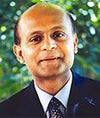
In his State of the State address, California’s Governor, Jerry Brown, declared a drought emergency. He suggested: “Among all our uncertainties, weather is one of the most basic. We can’t control it. We can only live with it…We can take this drought as a stark warning of things to come.”
He further emphasized the need to conserve water, expand storage, rethink water rules, invest in drinking water protection, and rethink the amount of state water each sector receives.
But, how can California move away from existing rules, expectations, and legacies that include multi-layered federal subsidies and senior water rights to a non-zero sum approach to resolve competing and conflicting water realties?
The choice is not between prioritizing water for delta smelt or salmon. Nor should we pit fish vs. farms, or people vs. the environment. Water users can expand the flexibility of the resource, effectively creating more water, through creative economic, technological, and cooperative measures. Water users need to engage in creative problem-solving to find ways that allow everyone to meet their most important needs, and these might be measured in different terms than just gallons or dollars. Water users and decision makers need to think differently to find non-zero sum collaborative pathways to resolution, as we illustrate in our book, Water Diplomacy.
Almost 80% of California’s 49 billion cubic meters of water is used for agriculture, which comprises about 3% of the state’s GDP. Alfalfa receives significant attention because the water-intensive crop uses 15% of the total water supply. However, most alfalfa grown in the Central Valley is fed to California cows, which may be a small portion of California’s economy, but account for 20% of U.S. dairy products. The alfalfa exported from the Imperial Valley may make a dent, albeit small, in the trade imbalance with China. The value of any crop, or other water-consuming commodity or service, can’t be evaluated solely through “water-in-to-dollars-out” comparisons and require understanding the perspectives of and value to the multiple stakeholders in each of these water uses.
Uncertainty about drought duration and intensity further complicates questions about water allocation, priorities, and future planning. This year may be the driest out of the past 400 years. What would happen if this drought continues for years? Bigger cities will have to adapt. Some farmers with senior water rights could profit by selling water to cities. Small towns would suffer and some might disappear.
Clearly, facts and statistics are not sufficient to sort out who should get how much water.
Water users and decision makers must challenge the long-held belief that water is a scarce resource. Cooperation among governmental and non-governmental actors and creative problem reframing can make water a flexible resource. Rather than framing decisions in terms of prioritizing urban use vs. alfalfa, and identifying winners and losers for a specific water quantity allocation, designing a mechanism for reallocating some agricultural water for a different use, while helping farmers keep their farms or feed their cattle, could lead to non-zero sum solutions.
Let’s expand innovative uses and judicious adaptions of technologies like desalination, reuse and recycling. Let’s expand focus from the “blue water” flowing in rivers and streams to include capturing and reallocating “green water” stored as soil moisture. Also, water divided between two regions in the past could be used first by one to support an urban population, then subsequently recycled and reused downstream for agriculture.
Let’s identify opportunities for developing and enhancing creative water use (for example, virtual water) between competing needs, and then carefully dismantle the barriers to implementing these interventions (e.g. inflexible water export restrictions, infrastructure status, and other legacy effects).
Rethinking water as a flexible resource acknowledges the complexity and uncertainty of natural and societal systems, and accepts the increasing interconnectivity and feedbacks of important decisions.
We agree with Governor Brown that we should never lose sight of the reality that life is local and many water decisions can only be handled by local representatives and leaders. They deal not with the “abstractions of law but with the flesh and blood reality of everyday life”.
This new approach to water diplomacy requires trust building at the local level where decisions are jointly made to meet competing demands. The cross-sector challenges for providing, using, and sharing water in California, or anywhere, including developing nations, can be addressed and resolved through an approach that transforms zero-sum negotiations into value creating opportunities that blend science, policy and politics in a new way.
Shafiqul Islam is a Professor Civil and Environmental Engineering and the Fletcher School of Law and Diplomacy at Tufts and the Director of the Water Diplomacy Program. Lawrence Susskind is a Professor of Urban and Environmental Planning at MIT and founder of the Consensus Building Institute. They are the authors of Water Diplomacy: A Negotiated Approach to Managing Complex Water Networks that was recently published by Resources for the Future.



Join the Conversation